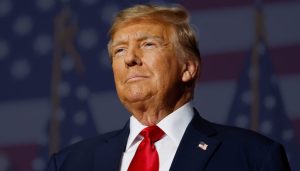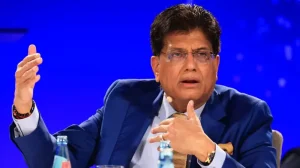U.S. President Donald Trump and Australian Prime Minister Anthony Albanese signed a rare-earth cooperation agreement at the White House on Monday, marking a new phase in the global competition for critical minerals.
The accord focuses on developing mining and refining projects for key minerals such as gallium, lithium, and nickel, essential for electric vehicles, defense systems, and communication technology. According to Reuters, the $2 billion investment will be deployed within six months to locate, extract, and process rare-earth deposits in both nations.
China currently controls over 70 percent of the world’s rare-earth production and nearly 90 percent of processing capacity. The new U.S.–Australia deal aims to reduce Beijing’s influence over these vital materials that power modern technology.
“We will soon have access to some of the most valuable minerals on Earth,” Trump said at the signing event. “Within a year, we’ll have rare materials so abundant that we’ll be deciding where best to use them.”
Prime Minister Albanese called the agreement a “historic partnership” that would elevate bilateral relations. He confirmed that projects worth around $8.5 billion are ready for immediate operation under the new framework.
2. Countering China’s Influence Through Diplomacy and Trade
Former Australian Prime Minister Kevin Rudd also attended the event, drawing light humor from Trump over Rudd’s past criticism. Despite the exchange, discussions remained cordial, highlighting a shared objective — reducing China’s leverage in the rare-earth market.
The pact also establishes minimum price benchmarks for critical minerals, preventing artificial pricing control by exporters. The Pentagon is preparing to launch a gallium processing facility in Western Australia, following China’s decision to restrict gallium exports in December last year.
The signing comes ahead of Trump’s scheduled meeting with Chinese President Xi Jinping in South Korea. Analysts view the agreement as a strategic counterbalance in the ongoing U.S.–China trade confrontation.
Beijing recently tightened export regulations on rare-earth elements, requiring foreign firms to seek approval even when re-exporting products containing Chinese minerals. In response, Washington announced a 100 percent tariff increase on selected Chinese imports, effective November 1.
Although both sides reached a temporary understanding in Geneva to lower tariffs for 90 days, mutual mistrust remains. The U.S.–Australia agreement signals Washington’s determination to diversify its critical mineral sources and lessen strategic dependency on China.
3. Rare-Earth Minerals and the Global Technological Future
Rare-earth elements comprise 17 specialized metals vital for smartphones, electric vehicles, defense systems, and artificial intelligence. While not entirely scarce, they are difficult to extract and refine economically. Strict environmental regulations in Western nations have allowed China to dominate the industry since the 1980s.
Experts estimate it will take several years for the United States to build a fully independent rare-earth supply chain. China’s cost advantage and processing expertise continue to make it the global leader in this field.
The Trump–Albanese rare-earth partnership is one of the most significant efforts to reshape global mineral supply lines. It reflects a strategic realignment toward energy independence, technological security, and defense resilience.
As both nations move forward, the success of this alliance will depend on how effectively they can build sustainable mining infrastructure and withstand China’s continued influence over the rare-earth market.






